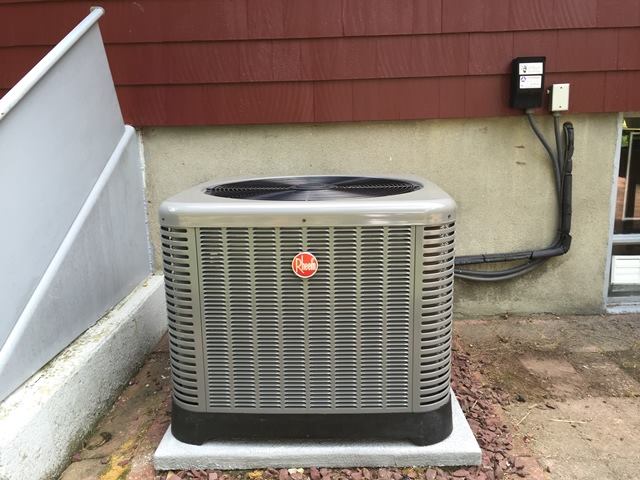Air conditioning has become an integral part of daily life, especially during the scorching summer months. Whether in homes, offices, or public spaces, the cool, refreshing relief that air conditioning provides has become a symbol of comfort and convenience. However, the history of air conditioning is a tale of innovation, experimentation, and persistence. The evolution of air conditioning spans centuries, from rudimentary cooling methods to the sophisticated systems we use today. This blog post will explore the journey of air conditioning, from its invention to its widespread use in the modern world.
Early Cooling Methods: Before Air Conditioning
Long before the advent of modern air conditioning, people used a variety of methods to stay cool. In ancient civilizations, cooling techniques were simple yet effective. In ancient Egypt, for example, people used reeds and wet cloths hung in doorways to create a cooling effect when the wind blew. Similarly, the Romans designed their homes with thick stone walls and open courtyards to create natural ventilation and cool indoor spaces.
In the 18th and 19th centuries, more innovative approaches were developed. In the 1700s, Benjamin Franklin and his colleague John Hadley experimented with evaporation to cool air. They discovered that by evaporating alcohol, they could lower the temperature of the surrounding environment. This discovery marked one of the first instances of humans attempting to manipulate temperature for comfort, though it was still far from the air conditioning systems we know today.
The Birth of Modern Air Conditioning: Willis Carrier
While early cooling methods were limited and rudimentary, the invention of modern air conditioning is credited to one man: Willis Haviland Carrier. In 1902, Carrier, an engineer, developed the first modern air conditioning system. However, his motivation wasn’t to cool air for comfort, but rather for a more practical reason.
At the time, Carrier was working at the Buffalo Forge Company in Buffalo, New York. The company had a client, the Sackett-Wilhelms Lithographing and Publishing Company, which was struggling with high humidity levels in its printing plant. The excessive moisture in the air was causing the ink to smear, and the paper was swelling and misprinting. To solve the problem, Carrier designed a system that would control both temperature and humidity by passing air over cold coils and using water to absorb moisture from the air. This invention not only solved the problem at the printing plant but also laid the foundation for modern air conditioning.
Carrier’s invention used a refrigeration cycle to cool air and dehumidify it, which was a groundbreaking concept at the time. It worked by drawing air over cold coils filled with chilled water or refrigerant. This process removed excess moisture and lowered the temperature of the air, creating a much more comfortable and controlled environment.
The Spread of Air Conditioning: The 1920s and 1930s
After the success of Carrier’s invention, air conditioning systems began to evolve and find applications in various industries. During the 1920s and 1930s, air conditioning gained popularity in commercial buildings, theaters, and other public spaces. In 1925, the famous movie theater, the “Fox Theatre” in Detroit, installed the first air conditioning system, making it a luxurious and attractive venue for moviegoers.
The 1930s saw the introduction of air conditioning in department stores and other businesses, where it was used to enhance customer comfort and increase productivity. By controlling temperature and humidity, businesses could create more favorable conditions for both employees and customers. This was especially true in places like Southern states, where the sweltering heat made indoor air conditioning an invaluable commodity.
However, the use of air conditioning during this time was still largely limited to commercial and industrial spaces due to the high cost of installation and maintenance. Residential air conditioning was still out of reach for most people.
Air Conditioning in Homes: The 1950s and 1960s
The 1950s and 1960s marked a turning point in the history of air conditioning, as the technology became more accessible to the average American household. Following World War II, the U.S. economy boomed, and technological advances helped lower the cost of manufacturing air conditioning units. During this time, window-mounted air conditioning units were introduced, making it possible for homeowners to install cooling systems in individual rooms.
The rise of suburban living in post-war America also contributed to the popularity of air conditioning. As more families moved into new homes in hot, humid regions of the country, air conditioning became a desirable feature. By the mid-1960s, millions of American homes had air conditioning, transforming the way people lived, worked, and interacted with their environment.
In addition to improving comfort, air conditioning had a profound impact on the economy. It helped boost industries such as tourism and real estate, as hot and humid regions became more livable and attractive. Cities like Las Vegas, Phoenix, and Miami experienced significant growth, largely due to the widespread availability of air conditioning.

The Environmental Impact and Energy Efficiency Concerns
As the use of air conditioning grew in the second half of the 20th century, so did concerns about its environmental impact. Air conditioning systems rely on refrigerants, which can contribute to ozone depletion and global warming. In the 1980s, scientists discovered that chlorofluorocarbons (CFCs), which were commonly used as refrigerants, were damaging the ozone layer. This discovery led to global efforts to phase out CFCs and replace them with more environmentally friendly alternatives.
In response to growing concerns about energy consumption and environmental sustainability, the air conditioning industry has made significant strides in improving energy efficiency. New refrigerants with lower global warming potential, such as hydrofluorocarbons (HFCs), have been introduced, and modern air conditioners are designed to use less energy while providing the same level of cooling comfort. The development of “smart” thermostats and energy-efficient systems has also made it possible for homeowners and businesses to reduce their cooling costs while minimizing their environmental impact.
Air Conditioning Today: The Modern Era
Today, air conditioning is a ubiquitous part of life in many parts of the world. From residential homes to large commercial buildings, air conditioning systems are used to provide comfort and productivity in both hot and cold climates. Technological advancements have led to the development of more efficient, quieter, and environmentally friendly systems. Modern air conditioners are often equipped with features such as humidity control, air purifiers, and Wi-Fi connectivity, allowing users to control their systems remotely and optimize energy use.
The impact of air conditioning is far-reaching. It has revolutionized industries, reshaped cities, and improved the quality of life for millions of people. It has also played a significant role in reducing the impact of extreme heat, making it possible for people to live and work in environments that were once unbearable.
However, the future of air conditioning is still being shaped by ongoing challenges, including climate change, population growth, and increasing energy demand. As the global population continues to rise and temperatures climb, finding sustainable and energy-efficient solutions for cooling will be essential.
Conclusion
The history of air conditioning is a fascinating journey of invention, adaptation, and progress. From the earliest attempts at cooling in ancient civilizations to Willis Carrier’s groundbreaking invention, the evolution of air conditioning has had a profound impact on modern society. In recent years, the importance of aircon servicing boon lay has grown significantly, as regular maintenance ensures that air conditioning systems continue to operate efficiently and effectively.
As technology continues to evolve, air conditioning will undoubtedly play a crucial role in shaping the future of our homes, businesses, and cities, all while addressing the ongoing challenges of environmental sustainability and energy efficiency. Whether we realize it or not, the cool comfort of air conditioning is a testament to human ingenuity and our ability to adapt to the changing world around us.




